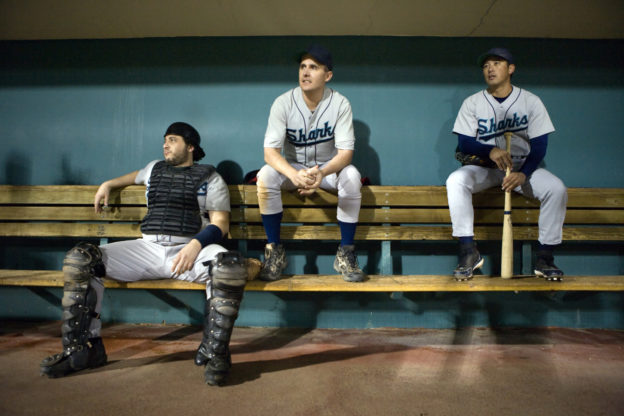Major League Baseball got its season underway with a nearly full slate of games on April 1. With the notable exceptions of a New York Mets–Washington Nationals game that was scrapped because of a handful of positive COVID-19 tests and the controversy surrounding a full stadium in Texas, the whole thing felt relatively…normal, for better or for worse. More normal, certainly, than last year’s truncated season of COVID-ball, which featured on-and-off field rule changes that were by turns reasonable (lots of COVID testing) and head-scratching. The National League adopted the hotly contested designated hitter? What does that have to do with the pandemic? And what does baseball have to do with research ethics? Well—nothing, technically. But there are some interesting parallels between experimentation in baseball during the time of COVID and some of the principles and dynamics of research ethics oversight. Stay with me here…
Ostensibly, the COVID-era rule changes were designed with safety in mind, though in reality, some were already under consideration before the coronavirus ever hit the scene. Just as in the clinical research context, the disarray brought on by COVID-19 made space for reimagining the usual rules and practices in creative ways. For baseball, this meant the chance to try out new tactics for a theoretically better game. Some view this as a necessary corrective to the sport’s slow pace and flagging popularity among young people (though the extent of the causal relationship between these two variables is up for debate).
While some of these rule changes were kept in 2021, others were done away with after a brief stint in the big leagues. But while Major League Baseball slides back into something more reminiscent of pre-2020 baseball, Minor League Baseball, whose season began yesterday, is undergoing dramatic and expanded rules experimentation.[1] Announced earlier this Spring, various minor leagues will debut a broad slate of new rules, all ultimately geared toward a particular vision of improving the entertainment product, such as restrictions on defensive positioning, larger bases, and robot umpires. Crucially, some of the rules[2] apply to all players evenly (like the robot umpires), but some, like new rules for pickoff throws, will have a disproportionate impact on certain groups of players. For example, left-handed pitchers are specifically disadvantaged by the new pickoff throw rules, which will reduce their ability to throw out runners on the basepaths—eliminating a significant element of their strategic toolkit.
This is, of course, not biomedical research or social science research, but there are dynamics similar to those seen in research ethics at play here. It’s important to understand Minor League baseball players as relatively vulnerable compared to their well-compensated Major League counterparts. Minor Leaguers aren’t represented by a union (indeed, all the 2020 and 2021 Major League rule changes came out of protracted, highly public, and sometimes acrimonious negotiation with its players’ union), and Minor League wages and working conditions are in many cases quite poor: a recent lawsuit brought by former Minor Leaguers alleges that many players make below the federal minimum wage, working hundreds of uncompensated hours each year. Major League Baseball’s singular position atop the baseball ladder (bolstered by a nearly 100-year-old federal monopoly exemption[3]) means that Minor League players with Major League aspirations have no other competitive arenas to ply their trade than the affiliated tiers of Minor League ball. So in the face of essentially no alternatives, Minor Leaguers are forced to put up with top-down rule changes that may have a drastic impact on their odds for success (or even a living wage as a baseball player).
The knowledge ultimately gained in the Minor Leagues’ experimentation will most likely never apply to the players subject to the testing, and the potential benefits will likely never accrue to them: only 10 percent of Minor Leaguers eventually go on to sign a Major League contract, according to Mother Jones. Meg Rowley, a host of the baseball podcast Effectively Wild, said on a recent episode that, while rule experimentation can have value, “it’s tricky because there are real players whose real careers…are [meaningfully] affected by rule changes like this.” A 2019 Sports Illustrated story exploring rule experimentation in independent leagues[4] described the changes as broadly unwelcome to those affected: “Baseball is baseball, and I want to play baseball. I don’t want to be a test dummy,” one player said.
Although the near-universal inescapable changes to many facets of life necessitated by the COVID-19 era may have made changes like these more palatable to the public, the timing of Minor League rule changes is also connected to MLB’s 2020 operational takeover of the Minor Leagues (previously, the Minor Leagues “operated independently of, but in cooperation with Major League Baseball”), which ensures that all professional, affiliated baseball is now structurally aligned to benefit the Major Leagues.
It’s certainly possible that the tweaks to baseball will make it more popular with more fans and inject some welcome energy to the game; that popularity may ultimately benefit the Minor Leaguers toiling in relative anonymity, though it’s not terribly clear how. In the meantime, they’ll have to adjust to a challenging series of changes to a game with potentially make-or-break stakes for their career, with little or no input in the design of the studies and no real ability to opt out. There’s no federal funding for this research, no IRB, no medical intervention—there’s not even a study protocol or principal investigator to hold responsible. This isn’t biomedical research with life-or-death consequences, but there are compelling parallels between the two—parallels that may even help you explain your research oversight job to a baseball-loving relative some day.
 Tim Badmington is the Policy and Engagement Manager for PRIM&R.
Tim Badmington is the Policy and Engagement Manager for PRIM&R.
[1] A brief explainer: American professional baseball is made up of 30 Major League teams, who each have around three or four affiliated minor league teams spread over several tiers and composed of younger or less-skilled players, most of whom hope to eventually play for a Major League team.
[2] Not all rules changes and experiments are novel; some began in 2019.
[3] This exemption is currently under scrutiny by some members of Congress for reasons unrelated to this piece.
[4] The independent leagues are a group of professional baseball leagues unaffiliated with Major or Minor League Baseball. Read more here.


Nice writeup, thank you!